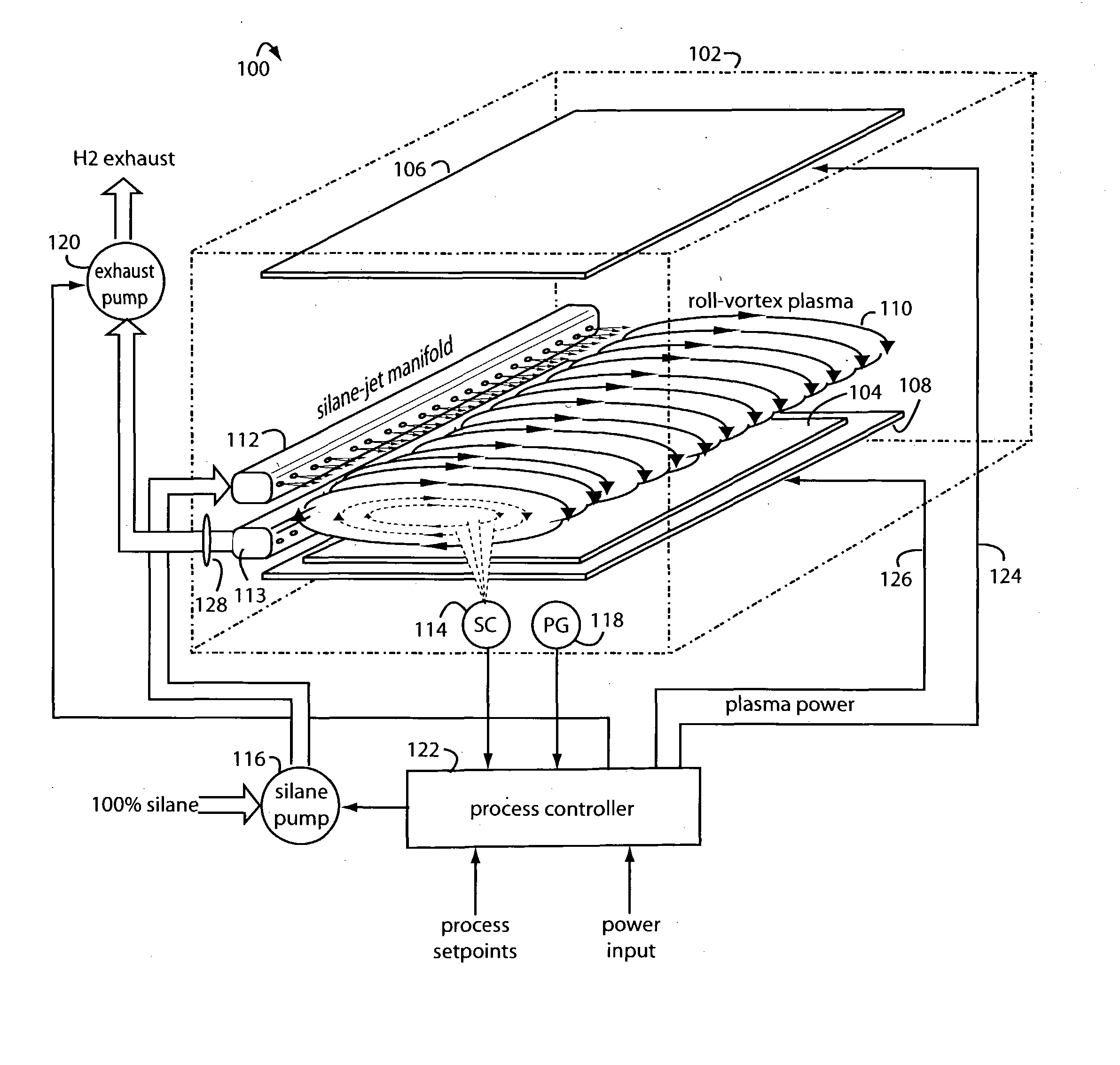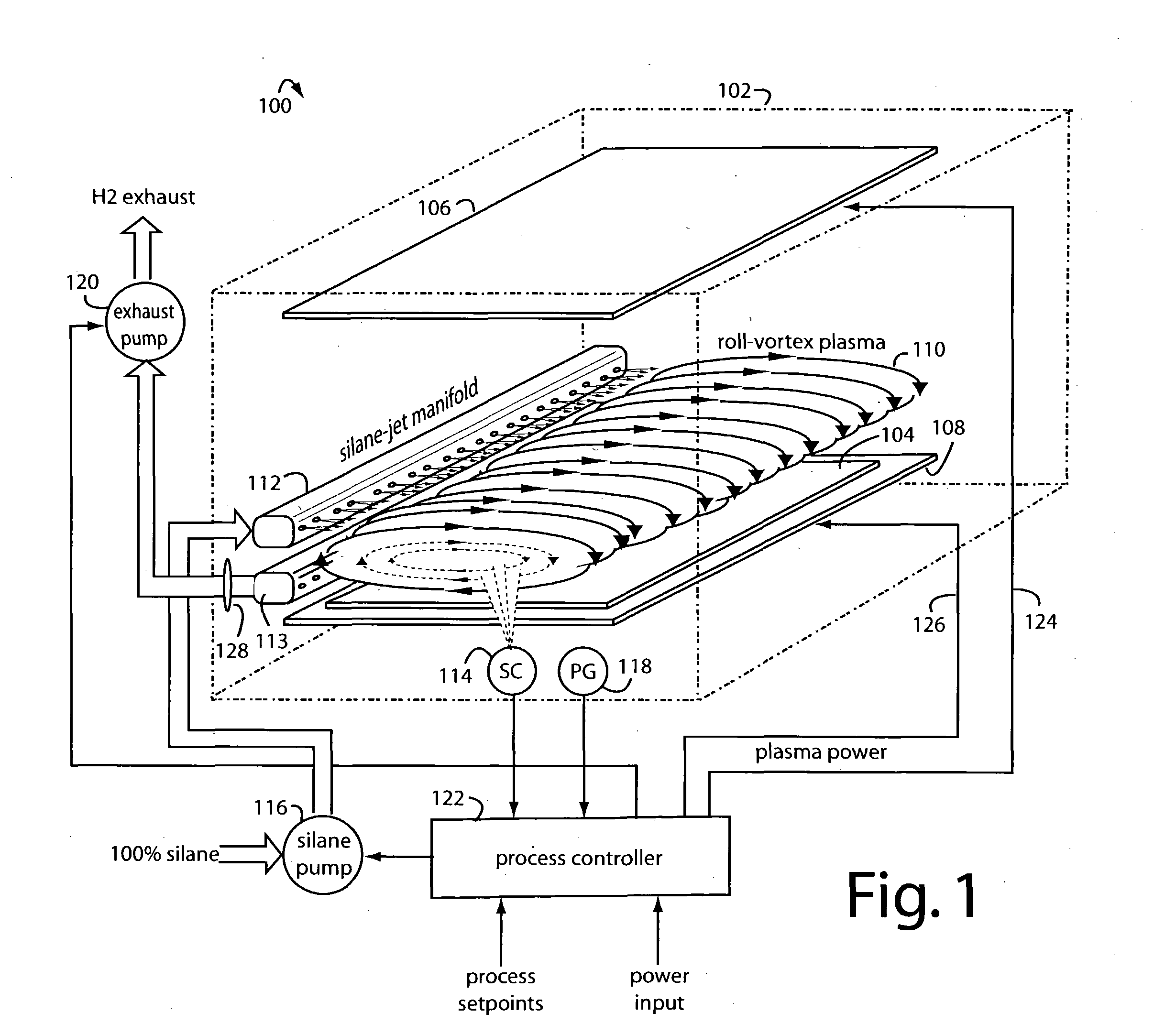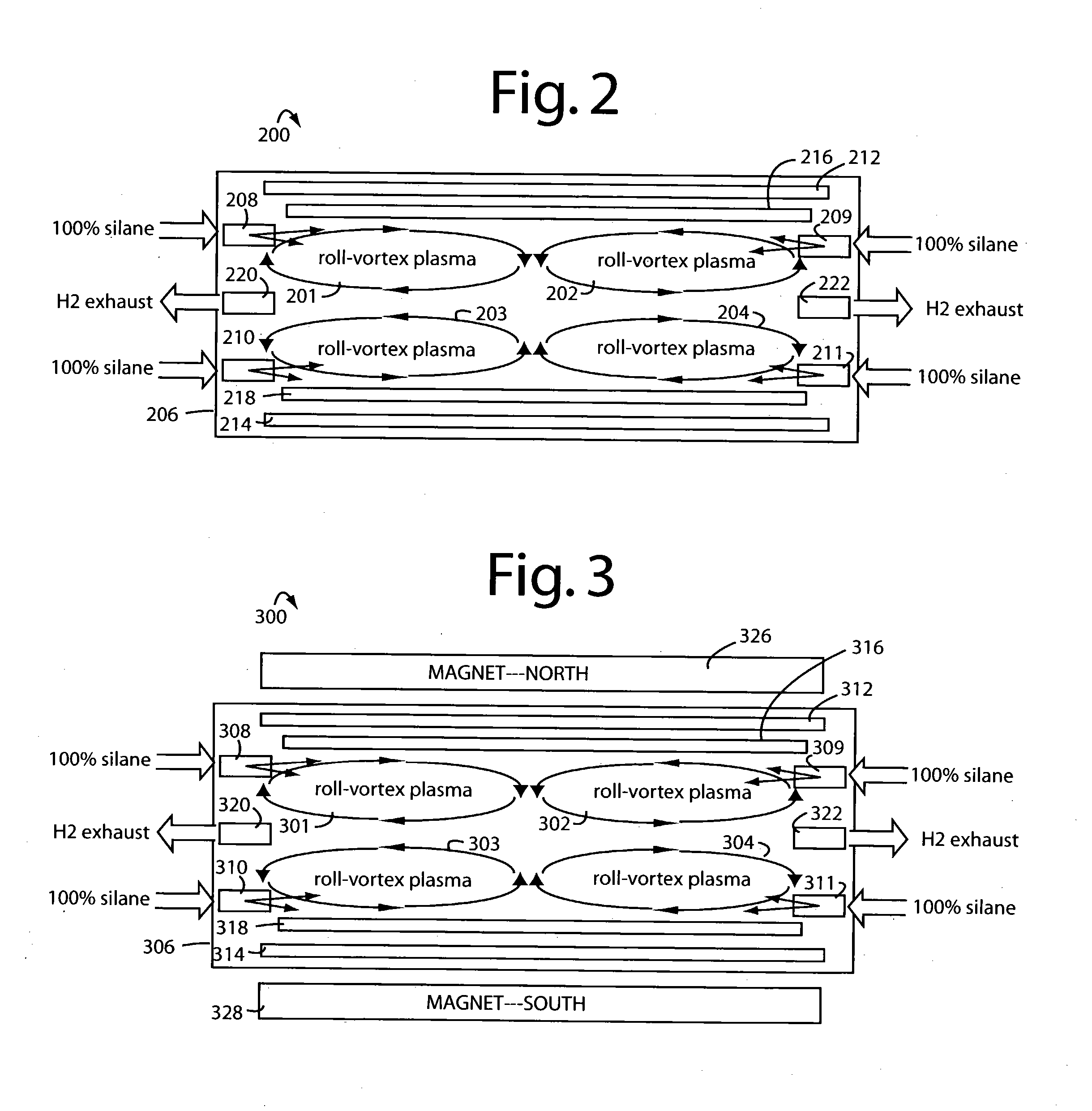Roll-vortex plasma chemical vapor deposition system
a chemical vapor deposition and roll-vortex technology, applied in the field of semiconductor manufacturing, can solve the problems of reducing the production efficiency affecting the quality of silicon thin-film deposition, and wasting a lot of silane in conventional pecvd processing equipment, so as to reduce the manufacturing cost of photovoltaic devices and save the use
- Summary
- Abstract
- Description
- Claims
- Application Information
AI Technical Summary
Benefits of technology
Problems solved by technology
Method used
Image
Examples
Embodiment Construction
[0028]FIG. 1 illustrates a PECVD system embodiment of the present invention, and is referred to herein by the general reference numeral 100. PECVD system 100 comprises a low-pressure chamber 102 in which a substrate workpiece 104 is transport perpendicular to the axis of roll-vortex plasma 110. A hydrogen atmosphere is introduced into the low-pressure chamber 102. A pair of radio frequency (RF) electrodes 106 and 108 are electrically driven to spawn a plasma 110. Such plasma 110 is rolled into a coaxial vortex by introducing high-velocity silane gas (SiH4) at near 100% purity just off center from a longitudinal manifold 112. An exhaust manifold 113 assists in rolling the plasma 110 when it draws off excess hydrogen (H2).
[0029] The silane concentration (SC) in the roll-vortex plasma 110 is maintained at about 6-7% silane-to-hydrogen by observing the relative amplitudes of fluorescence of the constituent gases with a monitor 114. More silane is jetted in by a pump 116 in order to mai...
PUM
| Property | Measurement | Unit |
|---|---|---|
| Temperature | aaaaa | aaaaa |
| Pressure | aaaaa | aaaaa |
| Flow rate | aaaaa | aaaaa |
Abstract
Description
Claims
Application Information
 Login to View More
Login to View More - R&D
- Intellectual Property
- Life Sciences
- Materials
- Tech Scout
- Unparalleled Data Quality
- Higher Quality Content
- 60% Fewer Hallucinations
Browse by: Latest US Patents, China's latest patents, Technical Efficacy Thesaurus, Application Domain, Technology Topic, Popular Technical Reports.
© 2025 PatSnap. All rights reserved.Legal|Privacy policy|Modern Slavery Act Transparency Statement|Sitemap|About US| Contact US: help@patsnap.com



